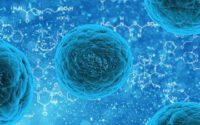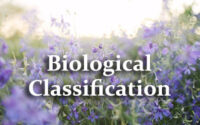Environmental Issues
1. During waste water treatment, trickling filter is used for-
A. primary treatment
B. secondary aerobic treatment
C. secondary anaerobic treatment
D. tertiary treatment
2. Who proved that blends of polyblend (plastic waste) and bitumen, when used to lay roads, enhanced the bitumen’s water repellent properties and helped to increase road life?
A. Amrita Devi
B. Ramdeo Misra
C. Ramesh Chandra Daga
D. Ahmed Khan
3. A scrubber in the exhaust of a chemical industrial plant removes-
A. gases like ozone or methane
B. gases like sulphur dioxide
C. gases like nitrous oxide
D. particulate matter of the size 5 micrometers or above.
4. Which of the following would most likely help to slow down the greenhouse effect?
A. Converting tropical forests into grazing land for cattle
B. Ensuring that all excess paper packaging is burned to ashes
C. Redesigning landfill dumps to allow methane to be collected
D. Promoting the use of private rather than public transport.
5. BOD refers to-
A. the oxygen required for bacteria to grow in 1 litre of effluent
B. the amount of oxygen consumed if all the organic matter in 1000 mL of water were oxidised by bacteria
C. the amount of oxygen released if all the organic matter in 1000 mL of water were oxidised by bacteria
D. the amount of oxygen released when all the organic matter was consumed by bacteria in 1 litre of water.
6. Photochemical smog always contains-
A. O3
B. CO
C. CH4
D. PO4
7. The beauty of Taj Mahal is endangered due to-
A. degradation of marble due to high temperature
B. discharge of industrial waste in Yamuna river
C. air pollutants released from oil refinery
D. riparian erosion.
8. Examples of secondary air pollutants is/are-
A. Smog
B. O3
C. PAN
D. all of these
9. The polluting strength of sewage is usually characterised by its-
A. BDO
B. nitrogen content
C. ozone content
D. eutrophication
10. Contribution of ‘methane’ and ’CFCs’ towards green house effect is—
A. 20% and 6%
B. 14% and 6%
C. 20% and 14%
D. 60% and 20%
11. Eutrophication is the natural ageing of lake by-
A. sewage enrichment
B. nutrient enrichment
C. physical enrichment
D. fertilisers enrichment
12. If the concentration of DDT in water is 0.003 ppm, then the concentration of DDT in small fish is most likely be-
A. 0.003 ppm
B. 0.04 ppm
C. 0.5 ppm
D. 2 ppm
13. Photochemical smog formed in congested metropolitan cities mainly consists of-
A. ozone, peroxyacyl nitrate and NOX
B. smoke, peroxyacyl nitrate and SO2
C. hydrocarbons, SO2 and CO2
D. hydrocarbons, ozone and SOX.
14. Plants do not get benefit from—
A. N2 in air
B. O2 in air
C. CO2 in air
D. O3 in air
15. The zone of atmosphere in which the ozone layer is present is called-
A. Ionosphere
B. Mesosphere
C. Stratosphere
D. troposphere
16. A scrubber in the exhaust of a chemical industrial plant removes-
A. gases like sulphur dioxide
B. particulate matter of the size 5 micrometer or above
C. gases like ozone and methane
D. particulate matter of the size 2.5 micrometer or less
17. A location with luxuriant growth of lichens on the trees indicates that the-
A. trees are very healthy
B. trees are heavily infested
C. location is highly polluted
D. location is not polluted
18. With the rise of water temperature, dissolved oxygen—
A. remains unchanged
B. increases in amount
C. decreases in amount
D. is more available to the aquatic organisms.
19. ‘Kyoto protocol’ is a multination international treaty for-
A. phasing out green house gases
B. controlling ozone destroying substances
C. management of hazardous wastes
D. conservation of biodiversity
20. Main cause of eutrophication is—
A. fluctuation of temperature
B. unusual growth of aquatic vegetations
C. enrichment of nutrients
D. abundance of microoganisms
21. The prime contaminants in lakes eutrophied by sewage and agricultural wastes are-
A. sulphates and phosphates
B. nitrates and sulphates
C. nitrates and phosphates
D. nitrates and carbonates
22. A citizen group called Friends of the Arcata Marsh (FOAM) basically belongs to—
A. Germany
B. USA
C. Canada
D. UK
23. The ozone hole over Antactica develops each year between—
A. late December and early February
B. late February and early April
C. late April and early June
D. late August and early October
24. ‘Floc‘ is
A. a mesh-like structure formed by the association of bacteria and fungal filaments in sewage treatment
B. the primary sludge produced in sewage treatment
C. the effluent in primary treatment tank obtained during sewage treatment
D. a type of biofortified food
25. If there was no carbon dioxide in the earth’s atmosphere, the temperature of the earth’s surface would be-
A. less than the present level
B. same as the present level
C. dependent on the oxygen content in the atmosphere
D. more than the present level
26. Which of the following is true for eutrophicated water body?
A. Rich species diversity
B. High mineral content
C. Low organic content
D. High oxygen content
27. Carbon dioxide, methane, nirtogen oxide and chloroflurocarbons are called greenhouse gases because they can absorb—
A. ultraviolet radiations
B. visible light radiations
C. y-rays radiations
D. long wave infrared radiations.
28. Hyacinth is termed as the Terror of Bengal. How does it cause death of fishes?
A. Covers the surface of the water that inhibit sunlight to pass through
B. Drains oxygen from the water that causes oxygen deficiency
C. Absorbs nutrients from the water that causes malnutrition
D. Releases carbon dioxide in a huge amount which is lethal to fishes.
29. Ozone hole is measured in—
A. Decibel
B. dobson units (DU)
C. parts per million (PPM)
D. cubic centimeter
30. Global warming can be controlled by—
A. increasing deforestation, slowing down the growth of human population
B. increasing deforestation, reducing efficiency of energy usage
C. reducing deforestation, cutting down use of fossil fuel
D. reducing reforestation, increasing the use of fossil fuel.
31. The Air Prevention and Control of Pollution Act. came into force in—
A. 1985
B. 1990
C. 1975
D. 1981
32. Kyoto protocol was endorsed at—
A. CoP – 6
B. CoP – 4
C. CoP – 3
D. CoP – 5
33. An international treaty on ozone depletion known as Montreal Protocol was signed at Montreal in the year-
A. 1981
B. 1983
C. 1985
D. 1987
34. ‘Knock knee’ syndrome occurs due to the pollution of—
A. Nitrates
B. Phosphates
C. fluorides
D. heavy metals
35. In a polluted environment, the maximum pollutant will occur in—
A. primary producers
B. tertiary consumers
C. secondary consumers
D. primary consumers
36. The second commitment period for Kyoto Protocol was decided at—
A. Durban
B. Bali
C. Doha
D. Cancun
37. Which one of the following is not correct with regard to the harmful effects of particulate matter of the size 2.5 micrometers or less?
A. It can cause respiratory problems
B. It can directly enter into our circulatory system
C. It can cause inflammation and damage to the lungs
D. it can be inhaled into the lungs.
38. Select the correct statement-
A. Particulate matter of size 10 pm can create severe damage to the lungs.
B. Particulate matter of size greater than 2.5 pm can get trapped in lungs and cause problems.
C. Particulate matter of size less than 2.5 pm penetrate deep into lungs.
D. None of the above.
39. Which one of the following is a wrong statement?
A. Most of the forests have been lost in tropical areas.
B. Ozone in upper part of atmosphere is harmful to animals.
C. Greenhouse effect is a natural phenomenon.
D. Eutrophication is a natural phenomenon in freshwater bodies.
40. In an area where DDT had been used extensively, the population of birds declined significantly because—
A. birds stopped laying eggs
B. earthworms in the area got eradicated
C. cobras were feeding exclusively on birds
D. many of the birds laid eggs, did not hatch.
41. Which one of the following statements is not valid for aerosols?
A. They are harmful to human health.
B. They alter rainfall and monsoon patterns.
C. They cause increased agricultural productivity.
D. They have negative impact on agricultural land.
42. Biochemical Oxygen Demand (BOD) may not be a good index for pollution for water bodies receiving effluents from-
A. domestic sewage
B. dairy industry
C. petroleum industry
D. sugar industry
43. A lake which is rich in organic waste may result in—
A. increased population of aquatic organisms due to minerals
B. drying of the lake due to algal bloom
C. increased population of fish due to lots of nutrients
D. mortality of fish due to lack of oxygen.
44. The highest DDT concentration in aquatic food chain shall occur in—
A. Phytoplankton
B. Seagull
C. Crab
D. eel
45. A river with an inflow of domestic sewage rich in organic waste may result in—
A. an increased production of fish due to biodegradable nutrients
B. death of fish due to lack of oxygen
C. drying of the river very soon due to algal bloom
D. increased population of aquatic food web organisms. [NEETP/tM&-I’16]
46. Depletion of which gas in the atmosphere can lead to an increased incidence of skin cancers?
A. Ammonia
B. Methane
C. nitrous oxide
D. ozone
47. One greenhouse gas contributes 14% to total global warming and another contributes 6%. These are respectively identified as—
A. N2O and CO2
B. CFCs and N2O
C. methane and CO2
D. methane and CFCs
48. The Montreal Protocol (1987) refers to-
A. presistent organic pollutants
B. global warming and climatic changes
C. biosafety of genetically modified organisms
D. controlling the emission of ozone depleting substances.
49. Snow blindness is caused due to—
A. acid rain
B. ozone hole
C. greenhouse effect
D. nuclear winter
50. A scrubber in the exhaust of a chemical industry removes—
A. nitrous oxide
B. hydrogen sulphide
C. carbon dioxide
D. sulphur dioxide
51. Assertion : BOD of a river polluted by sewage is more than 20 ppm.
Reason : Polluted river contains excess of organic matter.
A. If both assertion and reason are true and reason is the correct explanation of assertion
B. If both assertion and reason are true but reason is not the correct explanation of assertion
C. If assertion is true but reason is false
D. If both assertion and reason are false.
52. Assertion : Presence of large amounts of nutrients in water body causes excessive growth of planktonic algae.
Reason : It is due to biomagnification.
A. if both assertion and reason are true and reason is the correct explanation of assertion
B. If both assertion and reason are true but reason is not the correct explanation of assertion
C. If assertion is true but reason is false
D. If both assertion and reason are false.
53. Acid rain is caused by increase in the atmospheric concentration of—
A. CO2 and CO
B. O3 and dust
C. SO2 and NO2
D. SO3 and CO
54. Which of the following are most suitable V indicators of SO2 pollution in the environment?
A. Algae
B. Fungi
C. Lichens
D. Conifers
55. The UN conference of Parties on climate change in the year 2012 was held at—
A. Lima
B. Warsaw
C. Durban
D. Doha
56. Eutrophication of water bodies leading to killing of fishes is mainly due to non-availability of—
A. essential minerals
B. oxygen
C. food
D. light
57. Increase in concentration of the toxicant at successive trophic levels is known as—
A. Biotransformation
B. biogeochemical cycling
C. biomagnificafion
D. biodeterioration
58. Which one of the following combinations is wrong?
A. Rio convention — Air pollution
B. Kyoto protocol -— Climate change
C. Montreal protocol — Ozone depletion
D. Ramsar convention — Wetland conservation



